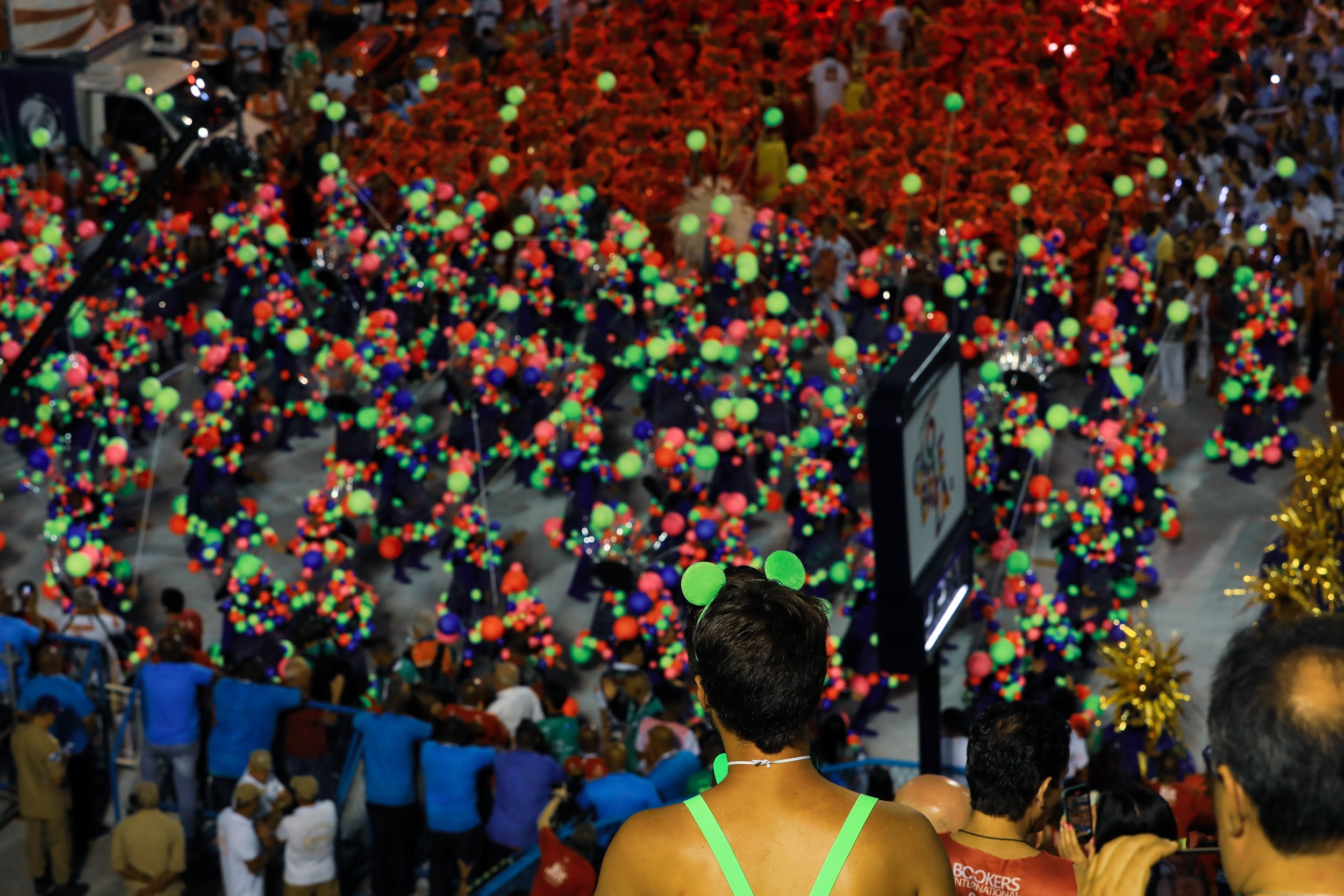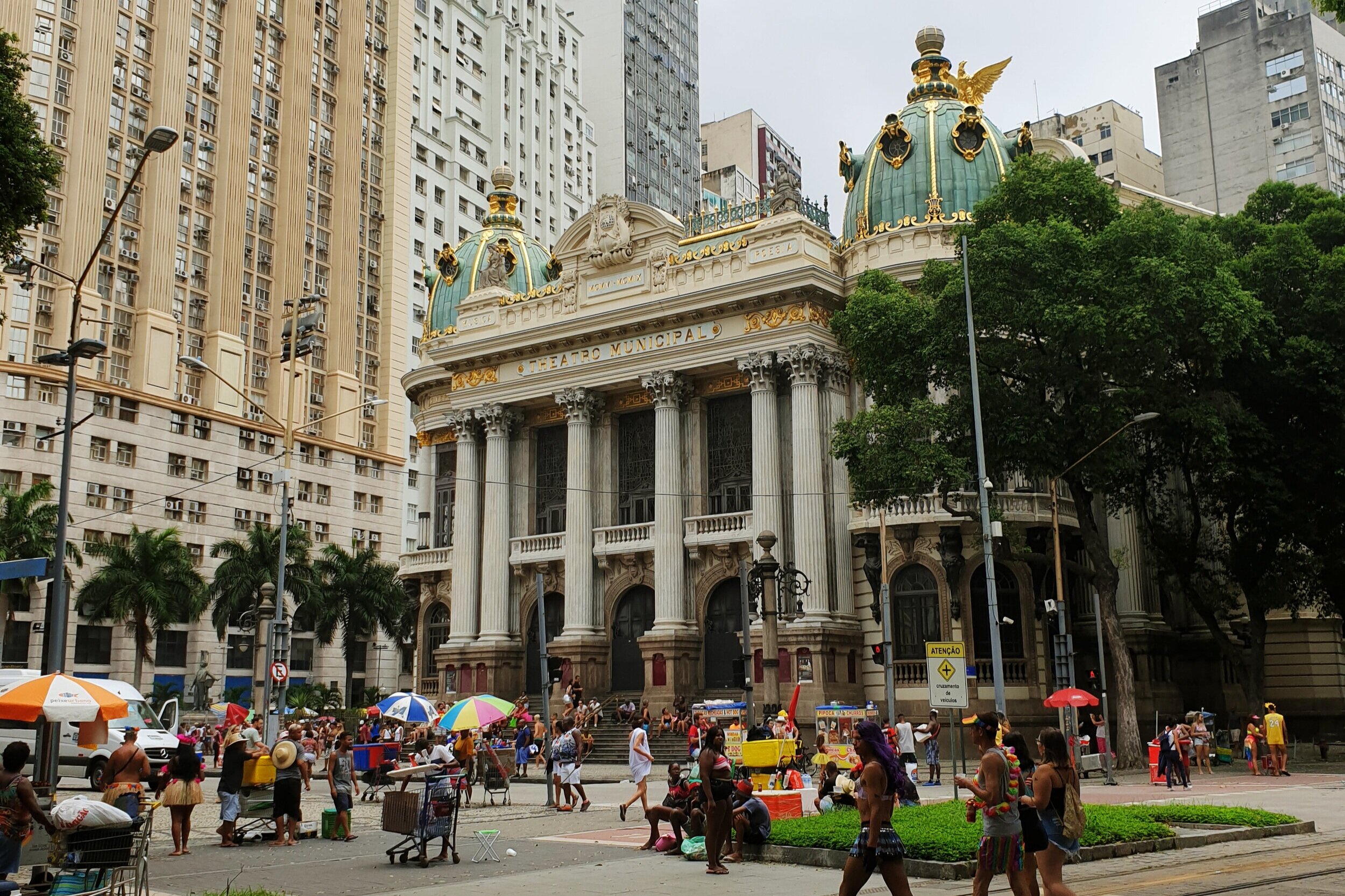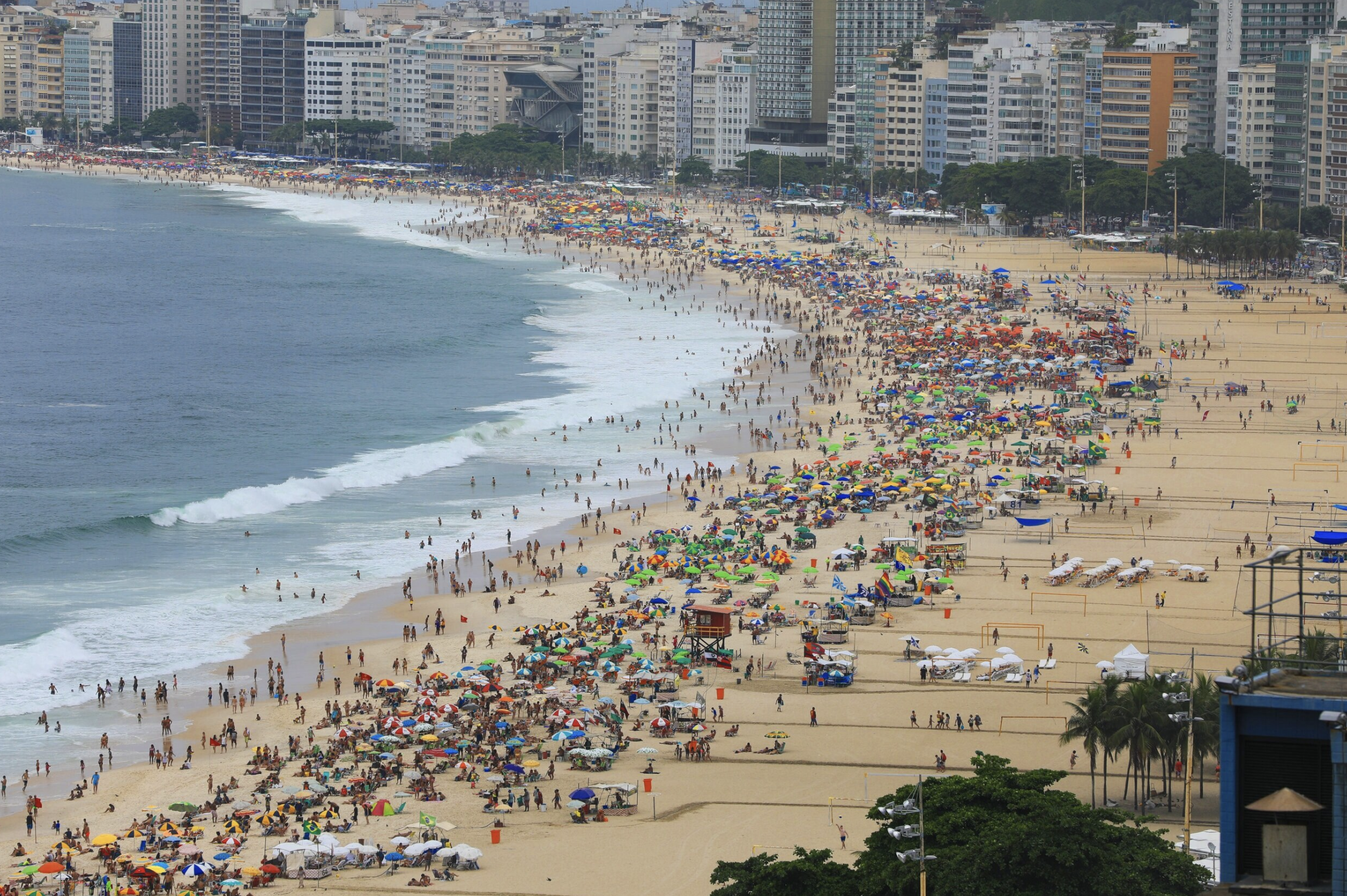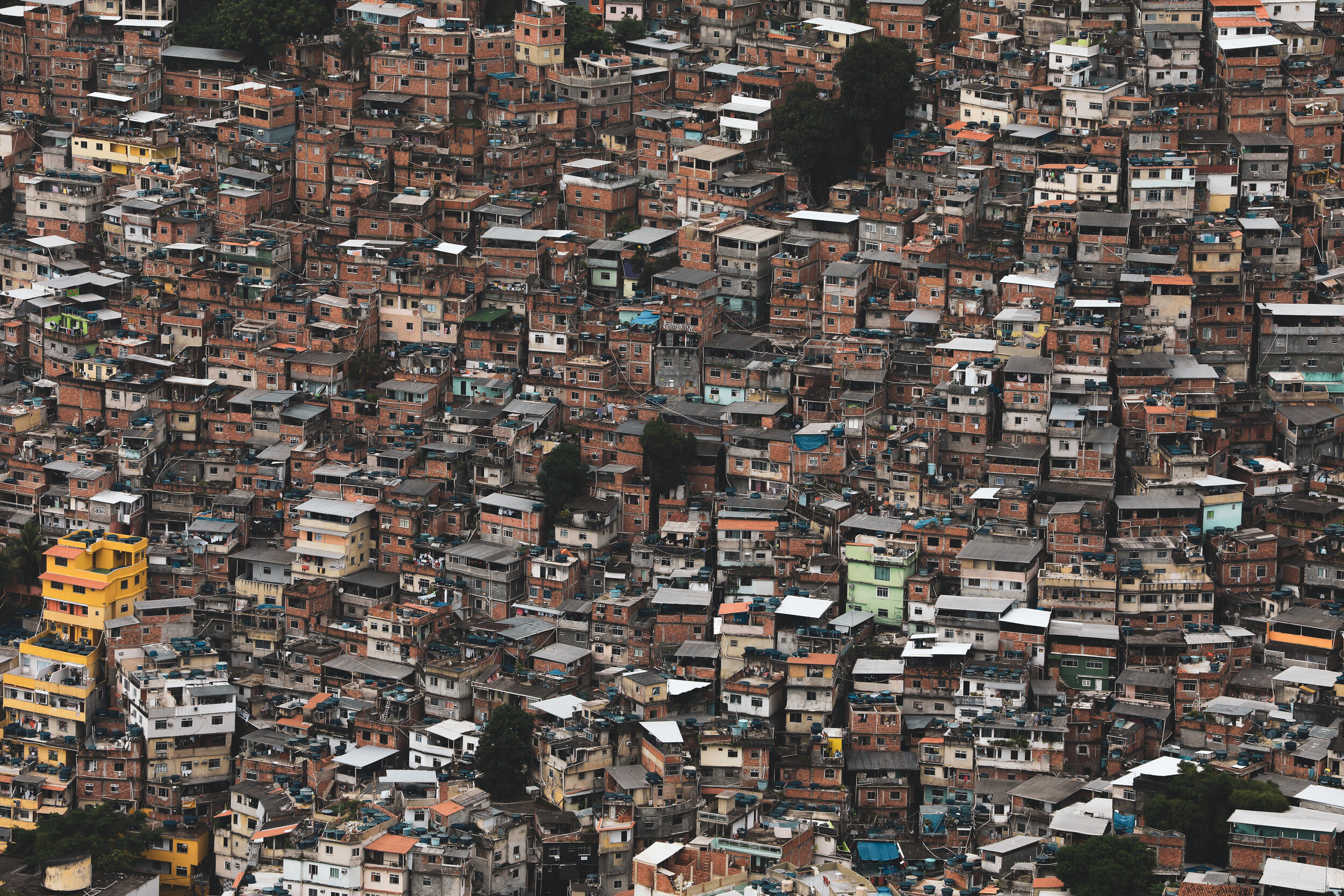10 Things to Know Before Going to the Rio Carnival
Origin of Carnaval
CARNAVAL comes from the Latin "carnem levare" which kind of means "goodbye, meat!"
The Carnival has its roots in Christianity and is celebrated every year for 5 days before Ash Wednesday (in February or March). It started out as more of a food festival prior to the 40 days of lent leading up to Easter. The Portuguese brought the tradition to Brazil during colonisation, and then the locals added in the African-Brazilian influences: the dancing, the music, the costumes. The SAMBA. A few centuries later, the celebration has grown into something much bigger and truly unique!
Sambódromo
This is the side of Carnaval that is well known to a global audience.
The image of carts and performers parading along the Sambódromo is most likely what comes to mind when you’re thinking about the Carnival in Rio de Janeiro.
The annual parades at the Sambódromo are some of the largest celebrations in the world, and I don’t really have a word to describe just how amazing it is. It’s definitely a must for anyone visiting Rio during Carnaval.
Find out more about the Sambódromo experience.
Blocos
But the Carnaval experience is not all about the Sambódromo.
Over time, the samba school parades have become more popular with visitors and, as a result, they were no longer affordable for locals. This contributed to the popularity of “blocos”, effectively localised street parties, which started small and evolved into hundreds of such gatherings, some with tens of thousands of people in attendance. Make sure to check out some of those, they can be fun to watch and, more importantly, be part of. Blocos are very popular with cariocas, but not well known by the rest of the world.
Sambodromo is a much more impressive visual display, but you are just a spectator. While blocos lack the opulence of the big parades, they are the more genuine and raw side of Carnaval. It’s a fun experience where you are part of a crowd that you can relate to, and at no cost.
Some blocos have become very popular over the years and attract a huge audience. Examples include Cordao do Bola Preta or Suvaco do Cristo (which translates into Armpit of Christ, because it takes place in the Jardim Botânico neighbourhood, under the outstretched right arm of Cristo Redentor).
The various street parties are happening in specific locations year-on-year and often move along streets. It’s not straight-forward to do proper research on blocos as a foreigner, but there are mobile apps that allow you to monitor them in real time - I found those quite handy. Over the days of Carnaval, you can also see the major blocos marked on Google Maps.
Accommodation
Accommodation in Rio is relatively cheap compared to other parts of the world, with the exception of New Year and of course, Carnaval. During this time, hotels and apartments are known to do a few nasty things, such as require a minimum stay of 4-5 nights stay, ask for payment in advance that is most often non-refundable, and increase their prices by as much as 3 times. This is just the sad reality in any city blessed with a popular festival.
Here’s our own experience of Carnaval 2020. We booked our flights one full year in advance, because they were unusually inexpensive. We started looking for accommodation soon after, just to secure a good option. We figured hotels would be overpriced, so we turned to Airbnb. We got rejected in three different places that we booked subsequently, because the host hasn’t had a chance yet to spike up the rates. And so we ended up booking a stay at Hilton Copabana, one of Rio’s most famous hotels, which was well over our standards, but it worked out just a little over the cost of a private bedroom in someone’s flat. Turns out we booked before the prices were updated for Carnaval.
My general advice for Carnaval accommodation would be to start looking well in advance, and be open to areas outside Copacabana or Ipanema (e.g. Santa Teresa, Lapa, etc.). Sensible rates with a free cancellation guarantee can be limited.
This was the view from our room:
Stay for at least a week
The official Carnaval period is 5 days (mid-day Friday to mid-day Wednesday), though celebrations are already happening across the country in the weeks leading to Carnaval. Many accommodations tend to impose a minimum stay of several nights, and some attractions and restaurants close during the days of Carnaval.
4-5 days would normally be sufficient to take in the city of Rio. But during Carnaval, things are a little different. You would need at least a week to take in all the sights and also make the most of Carnaval. The parades at Sambódromo last until the early hours of morning, meaning you probably shouldn’t be getting up early the day before, and you most likely won’t do much the day after.
With all those things in mind, stay longer if you can and you won’t regret it. Our stay was quite short, we arrived on Friday morning and left on Tuesday afternoon. This meant that we missed out on a few of the attractions and didn’t have enough time to truly enjoy the celebrations. I didn’t expect to like Rio as much as I did and I do wish we stayed longer! Don’t make the same mistake we did.
Attractions
Note that the majority of indoor attractions of Rio de Janeiro, such as cathedrals or museums, close for the duration of Carnaval. Examples include: The Royal Portuguese Reading Room, Catedral Metropolitana de São Sebastião do Rio de Janeiro, Theatro Municipal, Museu do Amanhã, Parque das Ruinas.
The good news is the major attractions (Cristo Redentor, Sugarloaf, and any natural landmark) remain open.
Eating Out
We didn’t find that prices at restaurants were any higher than usual or unreasonable, during Carnaval.
Pretty much everything around Ipanema, Copacabana, Santa Teresa stays open during Carnaval. Centro, on the other hand, while very much alive with street parties, is completely dead when it comes to food. Uninformed and unprepared, we spent around half a day walking around Centro, planning to visit attractions only to discover they were closed, and not being able to find a place to eat, with the exception of a Starbucks and a McDonalds. Don’t do that. The only reason to be in Centro during Carnaval is to drink and have fun, and we learnt that the hard way.
Also unexpectedly, given the high season and limited availability, we were able to find a table at all the restaurants that we went to, without any advance reservation or any waiting time. I’m not saying that’s what usually happens, but that was our experience. Perhaps the majority of people are too busy partying to worry about food.
Getting Around
Rio is huge, so walking between the various neighbourhoods is really not an option.
There is Uber in Rio, and for that reason we didn’t bother with regular taxis. I’m not quite sure how regular taxis operate in Rio, whether they go by the metre or would negotiate a (possibly inflated) rate during Carnaval, but I’ve had many bad experiences in other countries, which is why I avoid regular taxis whenever I can. Uber is probably the safest and easiest way to get around the city, and it’s fairly inexpensive. Be weary of price surges though, due to the holiday season.
You can also get around by bus or subway as the locals would, which will work out cheaper especially for long distances. The one major issue with transport during Carnaval is the traffic, mainly because roads will often spontaneously close to accommodate the various street parties. Making your way across the city can take much longer than expected - take this into consideration when heading to the airport. Clearly, the subway, being underground, has the major advantage that this whole thing is no longer a problem. For Sambódromo in particular, the subway is simply the best way of getting there and back in time - this is important for securing a good spot on the bleachers. And it’s safe enough. Pre-booked coach transfers are unnecessary, overpriced and untimely.
What to wear
So what are you supposed to wear? I mean, it is Carnaval after all. Should you come up with a fancy-dress costume for the occasion? What kind? Or should you just dress as you normally would? What will others do? The simple answer is wear anything you like. Be yourself, or don’t be yourself. Go crazy. Classy, tacky, anything goes. Rio during Carnaval is the place to leave all your worries behind and just have fun, no one will judge. To give an idea: policemen, sailors, Marios, Luigis, angels, devils, fairies - these are very common sightings.
Know that Carnaval is the peak of summer. A street party under the sun is a hot and humid place, so maybe leave your jeans and sweater at home. Wear something comfortable - trainers, flip-flops, top, shorts, skirt, swimsuit or any combination of those. Walking around the city, not just the beach, in just swimwear is not at all uncommon, which to someone that lives in Europe may seem a bit strange. As general guidance, less is more in terms of clothing during Carnaval, for fun and comfort.
Safety
This is an important aspect of the experience of Carnaval and Rio in general, one that everyone asks about, and one that I was particularly concerned with, as a carrier of a somewhat expensive camera
During Carnaval in particular, there are so many people and so much police presence everywhere, that Rio feels safer than many other big cities.
When you are heading out for a street party, you might not want to be carrying a sizeable bag-pack, because it’s a worry and an uncomfortable distraction. It’s best to separate out the sightseeing and fun activities and prepare accordingly for each. A very common thing in Rio (perhaps surprisingly amongst locals, rather than tourists) is to wear a bum-bag to hold your phone and some cash.
This post uses some affiliate links which may earn us a small commission from clicks that result in a purchase at no extra cost to you. We hope the information is useful and thank you for supporting our blog.











Everything you need to know about the Rio Carnival